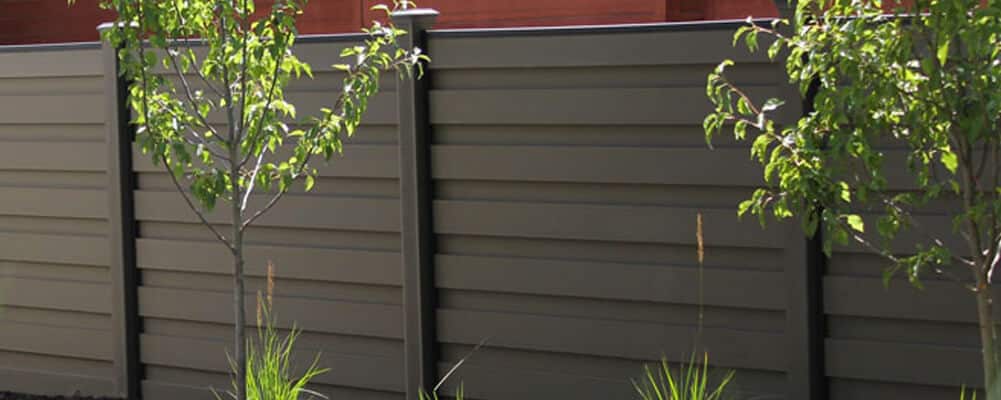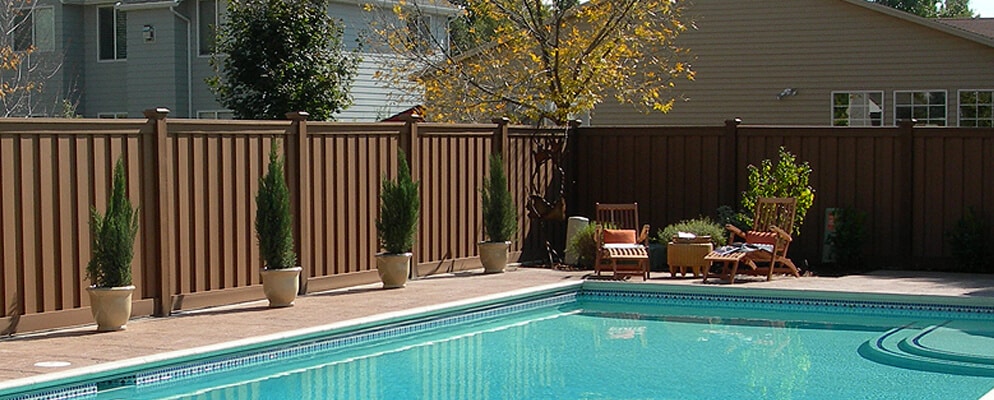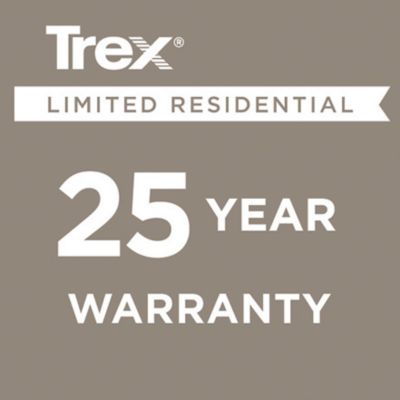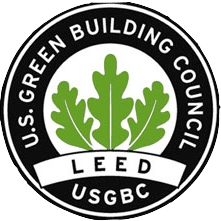Browse our list of Trex Fencing FAQs below. If you cannot find your question on this list, please contact us.
HOW MUCH DOES TREX FENCING COST?
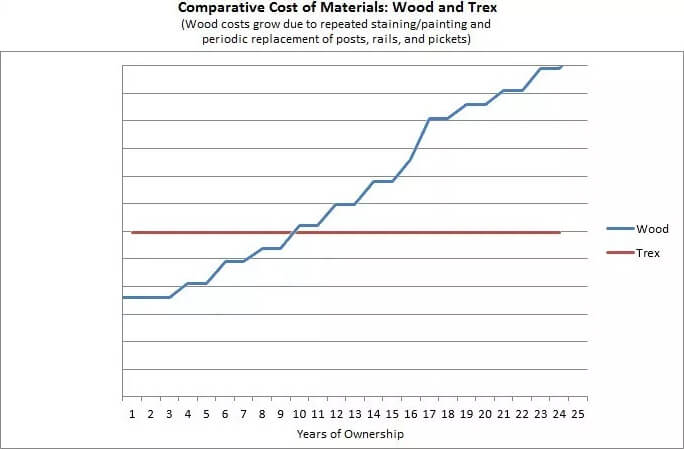
SHOULD HOAS CONSIDER TREX FENCING?
Absolutely! Maintaining operating costs are important for HOA budgets. Reducing annual operating costs on maintenance will allow your budget to allocate funds to more important items within the HOA. HOA’s CC&R’s are important for community aesthetics and to make sure the right products are being installed. It’s 25-year residential industry-leading warranty, stunning look, and innovative neighbor-friendly design will place value on HOAs for years to come and almost eliminate monotonous maintenance expenditures.
- Over time requires less maintenance and product replacement than wood or vinyl
- More durable than other competing fences
- 25-year non-prorated industry-leading residential warranty
- True full privacy fence and available matching gates
- Enhanced curb appeal
- Rich natural colors complement the property
- Distinctive composite smooth finish
- Neighbor-friendly design popular for shared lines
- Board-on-board style provides aesthetic appeal
- Can be built to the desired height
- 95% recycled materials, “Go Green”
IS TREX FENCING IS BETTER THAN WOOD?
Trex Fencing offers superior durability and performance that you can’t get from wood. Trex Fencing resists termites, won’t rot, warp, or splinter, and never needs staining or painting. What’s more, Trex Fencing is made from 95% recycled materials, making it an environmentally-friendly choice you can feel great about.
IS TREX FENCING IS MADE FROM RECYCLED MATERIALS, WHY IS IT MORE EXPENSIVE THAN WOOD?
While most of the raw materials used in making Trex Fencing are recycled, these materials are carefully processed to ensure the highest level of quality and performance. The end result is fencing that performs better than wood, lowering your cost over time through lesser maintenance.
WHAT IS THE LIFETIME VALUE OF TREX FENCING?
With wood fences, maintenance costs add up over time. Although Trex Fencing costs more initially, you’ll never have to sand, stain or paint your Trex Fencing. Over the life of your fence, those reduced maintenance costs add up to a greater value than wood – not to mention the value of all the time you get to spend enjoying your fence rather than working on it.
BEYOND USING RECYCLED MATERIALS, WHAT OTHER ENVIRONMENTALLY FRIENDLY PRACTICES DOES TREX EMPLOY?
Our manufacturing process recycles factory runoff and refuse back into the manufacturing line. Within our plant, the trailers that carry products run on vegetable-based oil hydraulics. Because of all these environmentally friendly practices, Trex is a member of the USGBC (U.S. Green Building Council) and Trex products contribute to a building’s LEED (Leadership in Energy and Environmental Design) points.
WHAT MATERIALS ARE USED IN THE MANUFACTURING OF TREX FENCING?
Trex Fencing is made from 95% recycled materials, including reclaimed wood and sawdust as well as recycled plastic from many common household items, such as the plastic overwrap on packaging for paper towels and toilet paper, dry cleaner bags, newspaper bags, grocery and shopping bags. Trex annually salvages and keeps more than 400 million pounds of plastic and wood scrap out of landfills. That makes Trex one of the largest plastic film recyclers in the U.S. In fact, the average 100-square-foot composite Trex Fencing contains 120,000 recycled plastic bags.
WILL TREX FENCING WEATHER OR FADE IN COLOR?
The Trex product receives heavy pigmentation during manufacture to allow it to settle into a lighter shade when weathered. Under normal conditions, twelve to sixteen weeks of exposure to sunlight and rain are typically required for Trex to achieve its weathered color. This process is completely harmless to Trex products and does not affect their durability. The post caps and top rail will fade the fastest because of their direct exposure to the elements. Because of their vertical orientation, the pickets and post faces may take considerably longer to fade. Due to the nature of composite materials, it should be expected that color variation between individual components may occur and in some cases may be significant. Trex Fencing is produced from a variety of recycled plastics and wood fibers which absorb pigments differently. While all colors of Trex Fencing may contain variation, it is typically more pronounced with Saddle and Winchester Grey. The three colors of Trex Fencing will lighten over time and color variation may become less noticeable. However, weathering will not eliminate all variation. Where possible, extra care should be taken to install similarly pigmented pickets in a section to minimize the appearance of variation. Color variation and fading do not affect the integrity of the product and are not covered under the Trex Warranty.
DOES TREX FENCING WORK WELL IN HOT, DRY, COLD, AND HUMID CLIMATES?
Any climate hot, dry, cold or humid Trex Fencing can handle. Because of its composition of wood and plastic materials, Trex Fencing can adapt to any climate. All composite material will expand and contract with changes in temperature. If properly installed, Trex components are manufactured in a manner to accommodate these fluctuations. Gate hardware is also easily adjustable and may require some fine-tuning as temperatures change.
IS TREX FENCING STRUCTURAL?
Trex wood plastic composites are not structural and should only be used for the intended design.
HOW HEAVY IS TREX FENCING?
Trex Fencing is 50-70% heavier than comparable lumber.
IS TREX FENCING CODE-COMPLIANT?
Trex Fencing when properly installed for approved applications is code compliant. Trex Fencing has been used on numerous residential, commercial, and government projects with fence heights ranging from 3’ to 12’ fence heights. As always check with your local codes for approved fence heights. Trex Fencing engineering docs are available in the Resource Center.
CAN TREX FENCING BE ANGLED?
Trex Fencing can be installed on straight runs, 90 degrees corners, and because of the angle adaptors, Trex Fencing is capable of being installed at angle degrees of 22.5 – 45. The angle adaptor attaches to the standard fence bracket for a 22.5 degree angle. When doubling the angle adaptors on the back of the fence bracket, allows for a 45 degree angle.
CAN TREX FENCING BE CUT?
Just like lumber, Trex Fencing materials can be cut to any length or height. Suggested blade-type carbide tip metal. Recommended power tools to cut materials: skill saw and miter saw.
CAN TREX FENCING BE PLACED ON A CONCRETE SURFACE/SLAB OR RETAINING WALL?
The Trex post is hollow and can slide over a support embedded in the wall. To ensure that the placement will not fail, it is important to evaluate whether or not the slab or wall is sturdy enough to support the fence. We do not recommend using a concrete mount that is anchored to a slab. This is not unique to Trex. A concrete mount is usually not sturdy enough to withstand the pressure from high wind or pressure against the panel without pulling up. The best way to install a fence on a retaining wall is to embed a steel post (a 2-3/8″ Schedule #20 galvanized steel post is best) directly into the wall and slide the Trex post over it. The post can then be filled with concrete to stiffen it. For ease, attach the brackets before pouring concrete into the post.
CAN I PAINT OR STAIN MY TREX FENCING?
Trex does not require painting or staining. However, if painting or staining is desired, the material is porous and will accept either when applied. Before applying completely, test the paint or stain on a small piece of material to make certain you achieve the desired result. Please note that applying paint or stain may void the warranty.
WHAT IS THE RECOMMENDED FASTENER TO INSTALL TREX FENCING?
A standard Trex Fencing section requires only 24 fasteners for the fence brackets, pickets, and top rails. The recommended fastener to use for these items listed is a 1 ⅝” exterior wood screw. These types of fasteners can be purchased at any local lumber yard. For non-standard Trex Fencing sections (heights 9′, 10′, 11′, & 12′), a self-tapping fastener is required for attaching fence brackets because of the steel post insert.
IS TREX FENCING HARD TO INSTALL? DIY OR HIRE A PROFESSIONAL?
Trex Fencing has been designed as a fence system for anyone with a basic construction understanding is able to install. Trex Fencing Installation Guide is available to read before making the decision to DIY or hire a professional. Trex Fencing is recruiting Trex Fencing Pros throughout the United States and Canada. Trex Fencing Pros are trained in Trex Fencing for product knowledge and installation methods. Remember, time is valuable and the additional expenses on labor are worth considering to have the project completed in a scheduled fashion with a professional.
